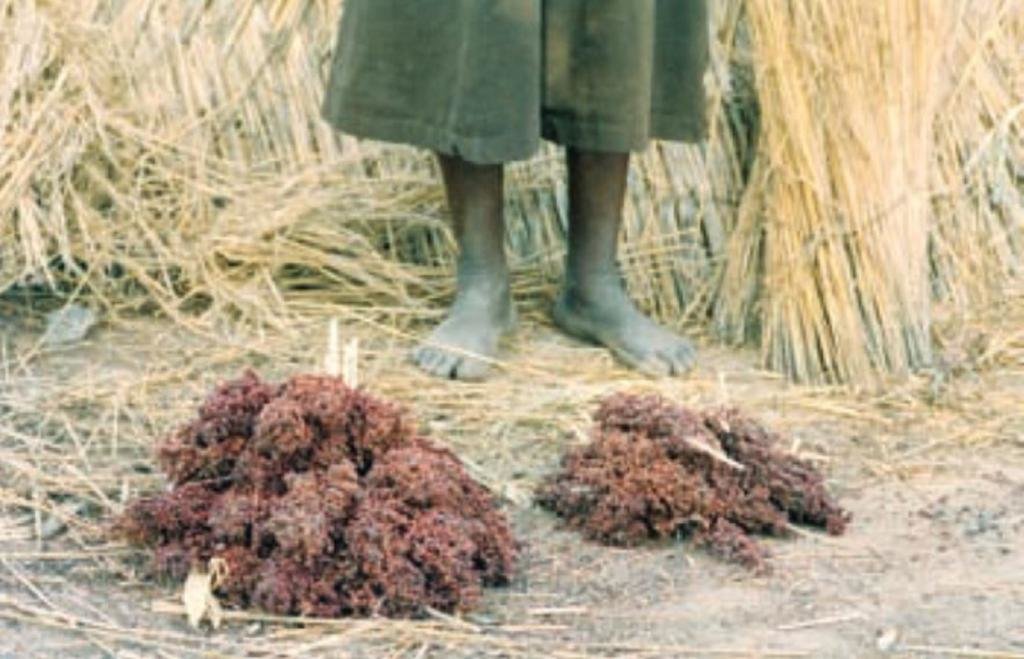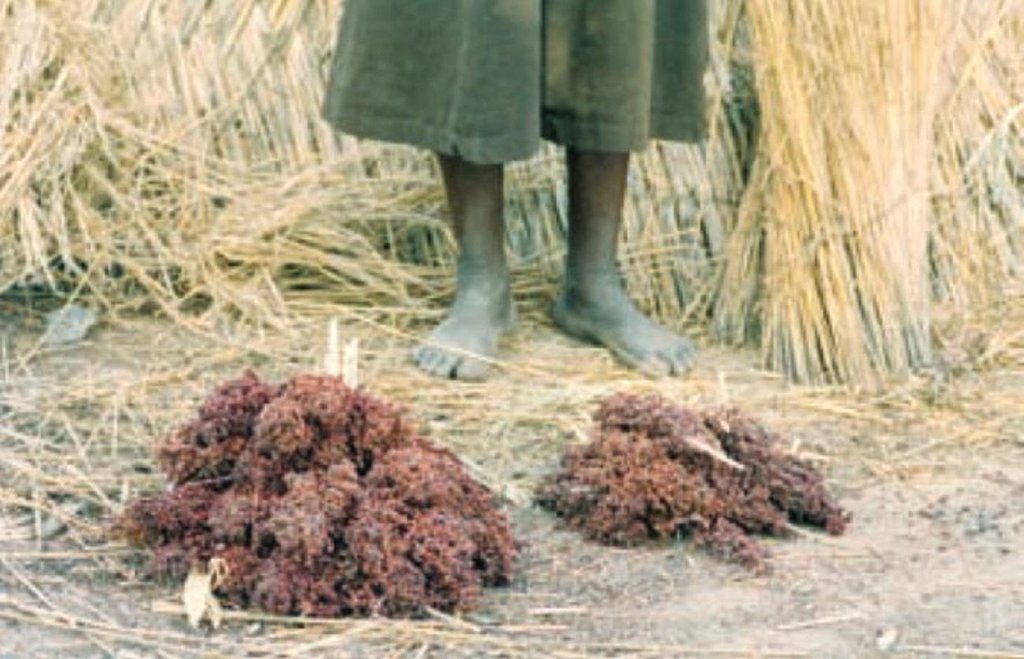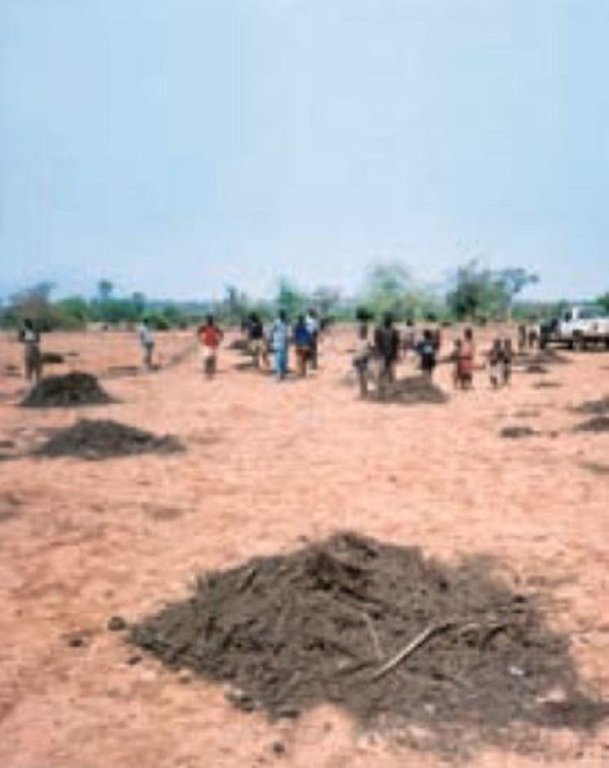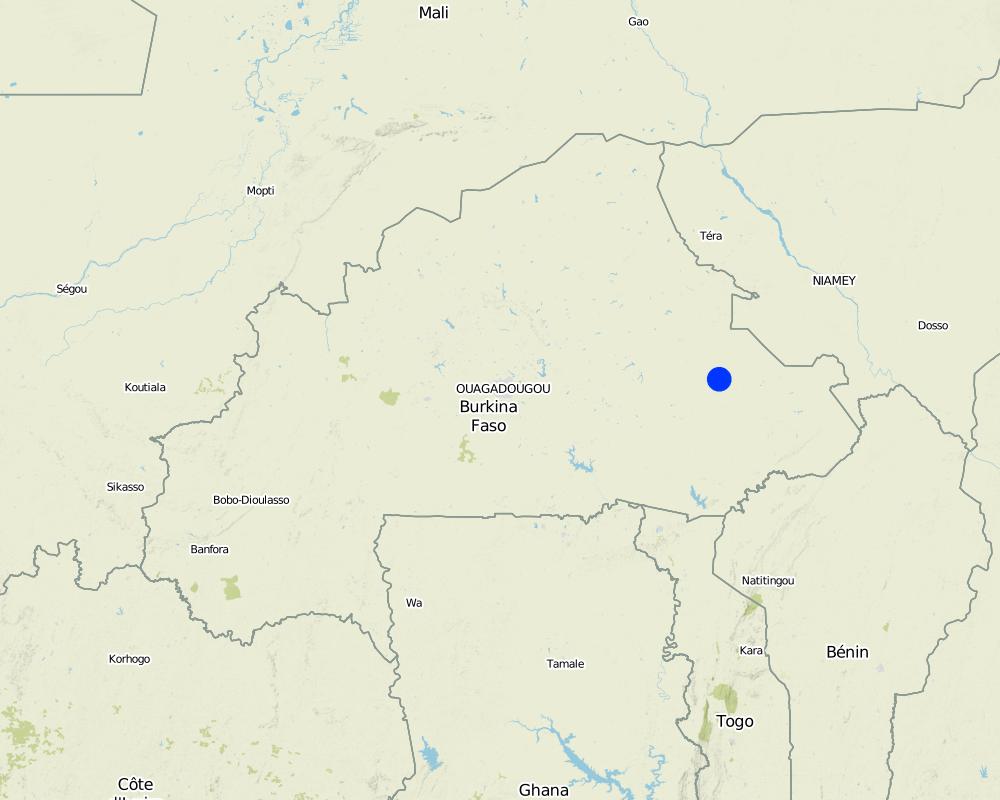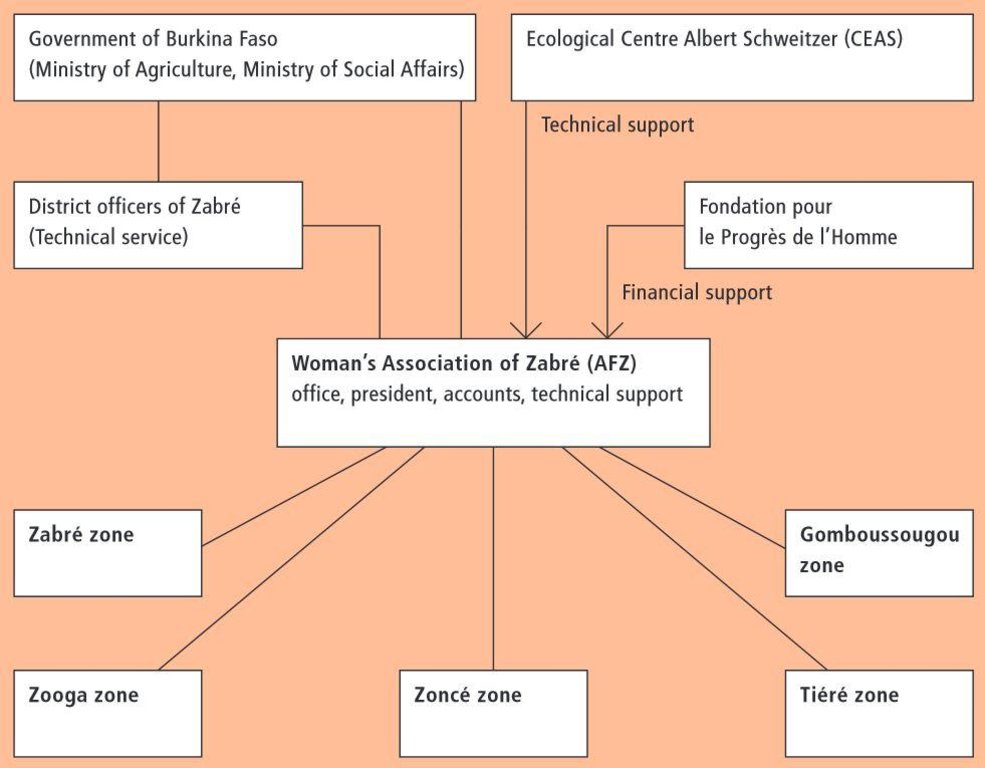Zabré women’s agroecological programme [Burkina Faso]
- Criação:
- Atualização:
- Compilador/a: Unknown User
- Editor: –
- Revisor: David Streiff
approaches_2405 - Burkina Faso
Veja as seções
Expandir tudo Recolher tudo1. Informação geral
1.2 Detalhes do contato das pessoas capacitadas e instituições envolvidas na avaliação e documentação da abordagem
Pessoa(s) capacitada(s)
Especialista em GST:
Lougue Maria
Association des femmes Pag-La-Yiri de Zabré (AFZ)
O9 B.P. 335 Ouagadougou 09,
Especialista em GST:
De Pury Jean Pascal Etienne
ceas.ne@bluewin.ch / ceas-rb@fasonet.bf
ancien directeur du Centre Ecologique Albert Schweitzer
CH-2000 NeuchâFtel, Switzerland, 2 rue de la Côte,
Suíça
Especialista em GST:
De Pury Jean Pascal Etienne
ceas.ne@bluewin.ch / ceas-rb@fasonet.bf
ancien directeur du Centre Ecologique Albert Schweitzer
CH-2000 NeuchâFtel, Switzerland, 2 rue de la Côte,
Nome da(s) instituição(ões) que facilitou(ram) a documentação/avaliação da Abordagem (se relevante)
Centre Ecologique Albert Schweitzer (CEAS) - Suíça1.3 Condições em relação ao uso da informação documentada através de WOCAT
O/a compilador/a e a(s) pessoa(s) capacitada(s) aceitam as condições relativas ao uso de dados documentados através da WOCAT:
Sim
1.4 Referência ao(s) questionário(s) sobre tecnologias da GST
2. Descrição da abordagem de GST
2.1 Descrição curta da abordagem
A demand-driven initiative, by a women’s association, aimed at the promotion of composting through training and extension, using project staff and local facilitators.
2.2 Descrição detalhada da abordagem
Descrição detalhada da abordagem:
Aims / objectives: Leaders of the women’s association of Zabré (Association des Femme de Zabré, AFZ) initiated a training programme for their members on compost making, and its application in planting pits (zai) after they visited a seminar on the topic in 1987. AFZ actively sought technical and financial help, and found this through the Centre Ecologique Albert Schweitzer (CEAS, based in Switzerland). Support began with the establishment of a first demonstration site where five local facilitators (one from each zone), learned about and developed the technology together over a whole year - comparing the results with sorghum fields without compost. In the following year, those five facilitators each trained 20 women in their zones, using the same training methods as they themselves had experienced. AFZ set up demonstration and training sites in each of the five zones. These demonstration areas were protected by a wire netting fence, contained a well, a cement water tank, and some shade trees for the compost heaps and training sessions. Machines for the wells, hand tools and manure were fully financed, whereas community infrastructure was only partly funded. Each demonstration site had one hectare of cultivated land, with irrigated vegetables in the dry season and sorghum in the rainy season. The facilitators used this land to demonstrate the effect of the compost, and thus to visually convince the trainees. Each of the trainees carried 20 kg of compost home and applied it to their own sorghum fields. During the first 18 months, a CEAS technician visited the zones regularly.
Methods: In the following years, the neighbouring villages each sent groups of 20 women to the established demonstration and training sites, each group for one day a week. They carried out the successive phases of composting in the demonstration plots, while simultaneously implementing the practice at home - where they were supervised by the facilitators as far as possible. In this way, 500 women were trained within one year. Although it took a while, men gradually began to take part and assist their wives when they lost their fear of being ridiculed by others. Many more women then put themselves forward for training. While waiting, they tried to imitate their neighbours, but with mixed results. The support of the CEAS project decreased over the years until 1997, after which it was phased out, being no longer necessary. Training has since continued through the five zonal facilitators and the local agriculture extension service.
2.3 Fotos da abordagem
2.5 País/região/locais onde a abordagem foi aplicada
País:
Burkina Faso
Região/Estado/Província:
Boulgou Province
Map
×2.6 Datas de início e término da abordagem
Indique o ano de início:
1987
Ano de término (caso a abordagem não seja mais aplicada):
1997
2.7 Tipo de abordagem
- Baseado em projeto/programa
2.8 Principais metas/objetivos da abordagem
- train 6,000 women members of AFZ (in 1987) in making compost, and applying it to planting pits (zai) in order to double yields of sorghum or maize - the eventual target is for all farmers of the two departments to make, and apply compost on their fields, - improve the status of women and their livelihoods, - encourage women’s participation in development, - promote training and cooperative action
The SLM Approach addressed the following problems: Since the drought and famine periods of 1970-74 and 1981-84, the main concern of the women in Zabré was how to feed their families. This meant trying to raise crop production again to the pre-1970s average of 800 kg/ha from the level of 400 kg/ha to which it had fallen. The soils were deteriorating because of declining organic matter as increased population led to continuous cultivation without fallow periods. The status of women was low, and they found it hard to generate income through other activities.
2.9 Condição que propiciam ou inibem a implementação de tecnologia/tecnologias aplicada(s) segundo a abordagem
Normas e valores sociais/culturais/religiosos
- Inibitivo
Men were afraid of being ridiculed in case of failures.
Treatment through the SLM Approach: Contrastingly, women don’t fear being laughed at. The expectation of increasing the yields encourages them to take risks: eventually men also followed for the same reasons.
Disponibilidade/acesso a recursos e serviços financeiros
- Inibitivo
Training of farmers is relatively expensive.
Treatment through the SLM Approach: The donors (Fondation pour le Progrés de l'Homme) and CEAS took care of the approach costs.
Quadro institucional
- Inibitivo
The existing institution of the women’s association of Zabré (AFZ), which has functioned well for 12 years, needed to adapt to the new agroecological programme promoted by CEAS.
Treatment through the SLM Approach: The management of the AFZ was motivated to adopt and integrate the technology offered by CEAS.
Quadro jurídico (posse de terra, direitos de uso da terra e da água)
- Propício
Even though the land users do not own the land they cultivate (the state officially owns the land, though land use rights are traditional and secure) they receive immediate and full benefits through improved crop yields.
- Inibitivo
Conhecimento sobre GST, acesso a suporte técnico
- Inibitivo
One key question was: how best to teach composting to 6,000 women?
Treatment through the SLM Approach: AFZ already had an extension structure and the five facilitators served as ‘multipliers’
3. Participação e papel das partes interessadas envolvidas
3.1 Partes interessadas envolvidas na abordagem e seus papéis
- Usuários de terra/comunidades locais
There were great differences - in the beginning at least - when AFZ merely asked the men to ‘allow’ their wives to learn about composting. After two years, men started to participate in the training and eventually as many of them as women began to make and use compost. Another difference was in discussions, when men tended to dominate.
- Especialistas em GST/ consultor agrícola
- Organização internacional
- AFZ
Leaders of the women's association of Zabré
3.2 Envolvimento do usuários de terra/comunidades locais nas diferentes fases da abordagem
| Envolvimento do usuários de terra/comunidades locais | Especifique quem estava envolvido e descreva as atividades | |
|---|---|---|
| Iniciação/motivação | Participativo | discussion of problems in public meetings |
| Planejamento | Participativo | meetings with those in charge of the groups of women farmers |
| Implementação | Participativo | in exchange for the training received, some land users volunteered themselves as temporary/part-time facilitators |
| Monitoramento/avaliação | Participativo | the land users learned to control the quality and the efficiency of their work and voluntarily contributed to monitoring/evaluation - the facilitators were responsible for progress reports |
| Research | Passivo | visit of international researchers to the farms |
3.3 Fluxograma (se disponível)
Descrição:
The agroecological programme of the Zabré Women's Association (AFZ). There are five facilitator’s zones each with:
- 1 president, 1 vice-president
- 1 facilitator
- 1 pharmacy
- 1 cereal bank
- 1 meeting room
- 1 shop
- 1 demonstration/training site
3.4 Decisão sobre a seleção de tecnologia/tecnologias de GST
Foram tomadas decisões quanto à seleção de tecnologia(s):
- Leaders of the women's association of Zabré (AFZ)
Explique:
in consultation with experts from the Centre Ecologique Albert Schweitzer (CEAS).
Decisions on the method of implementing the SLM Technology were made by Leaders of the women's association of Zabré (AFZ). CEAS, their engineers at Zabré and the facilitators designed the approach, which fitted well into the existing structure of AFZ.
4. Suporte técnico, reforço das capacidades e gestão do conhecimento
4.1 Reforço das capacidades/ formação
Foi oferecida formação aos usuários da terra/outras partes interessadas?
Sim
Tipo de formação:
- Agricultor para agricultor
- Áreas de demonstração
- Reuniões públicas
- Cursos
Tipo de formação:
- on-farm training
Assuntos abordados:
Training, as the central focus of the approach, was provided on two levels: project staff trained local facilitators, who then further spread the gained SWC knowledge among the land users. Subjects treated included compost making and application, reforestation, soil protection and anti-erosion measures. station training.
4.2 Serviço de consultoria
Os usuários de terra têm acesso a um serviço de consultoria?
Sim
Especifique se foi oferecido serviço de consultoria:
- nas áreas dos usuários da terra
Descreva/comentários:
Key elements: demonstrations and practical training of of AFZ’s members in the five demonstrationareas in the respective AFZ zones.
4.3 Fortalecimento da instituição (desenvolvimento organizacional)
As instituições foram fortalecidas ou estabelecidas através da abordagem?
- Sim, significativamente
Especifique a que nível (níveis) as instituições foram fortalecidas ou estabelecidas:
- Local
Especifique o tipo de apoio:
- Financeiro
- Reforço das capacidades/ formação
- Equipamento
4.4 Monitoramento e avaliação
Monitoramento e avaliação são partes da abordagem?
Sim
Comentários:
bio-physical aspects were regular monitored by 0 through observations; indicators: colour, texture and temperature of compost
technical aspects were regular monitored by 0 through observations; indicators: learning progress and production
socio-cultural aspects were ad hoc monitored by 0 through observations; indicators: effects on input and product prices
economic / production aspects were regular monitored by 0 through measurements; indicators: agricultural output
area treated aspects were regular monitored by 0 through observations; indicators: fields with compost
no. of land users involved aspects were regular monitored by 0 through observations; indicators: trained land users and implementers of technology
management of Approach aspects were regular monitored by 0 through measurements; indicators: CEAS' accounting expertise
There were no changes in the Approach as a result of monitoring and evaluation
4.5 Pesquisa
A pesquisa foi parte da abordagem?
Sim
Dê mais detalhes e indique quem realizou a pesquisa:
Applied research was not part of this approach. However CEAS used previous recommendations from an applied research station in Gorom (Burkina Faso) and thereby adapted the technology to the local situation.
5. Financiamento e apoio material externo
5.1 Orçamento anual para o componente de GST da abordagem
Comentários (p. ex. principais fontes de recursos/principais doadores):
Approach costs were met by the following donors: international (CEAS&Fondation pour le progrés del'homme): 80.0%; government (national): 20.0%
5.2 Apoio financeiro/material concedido aos usuários da terra
Os usuários da terra receberam apoio financeiro/material para a implementação de tecnologia/tecnologias?
Sim
5.3 Subsídios para entradas específicas (incluindo mão-de-obra)
- Equipamento
| Especifique quais entradas foram subsidiadas | Em que medida | Especifique os subsídios |
|---|---|---|
| Maquinário | Totalmente financiado | machines for the wells on demonstration areas |
| Ferramentas | Totalmente financiado | |
- Agrícola
| Especifique quais entradas foram subsidiadas | Em que medida | Especifique os subsídios |
|---|---|---|
| manure | Totalmente financiado | |
- Infraestrutura
| Especifique quais entradas foram subsidiadas | Em que medida | Especifique os subsídios |
|---|---|---|
| ommunity infrastructure | Totalmente financiado | |
Se a mão-de-obra pelos usuários da terra foi uma entrada substancial, isso foi:
- Voluntário
Comentários:
the hope of increasing yields served as an effective incentive.
5.4 Crédito
Foi concedido crédito segundo a abordagem para atividades de GST?
Não
6. Análise de impactos e declarações finais
6.1 Impactos da abordagem
A abordagem auxiliou os usuários da terra a implementar e manter as tecnologias de GST?
- Não
- Sim, pouco
- Sim, moderadamente
- Sim, significativamente
The compost making and its application has helped to improve soil and water management, as the compost returns humus to the soil and increases its water retention capacity and thus improves ground cover.
Did other land users / projects adopt the Approach?
- Não
- Sim, pouco
- Sim, moderadamente
- Sim, significativamente
Many women's groups from other regions throughout the country invite delegations from AFZ to teach them compost making. The AFZ delegates are provided with food, accommodation, travel costs and presents in exchange for training. This is much cheaper than the 'official' compost training provided by the Association for Agroecological Technology Development (ADTAE).
6.3 Atividades de sustentabilidade de abordagem
Os usuários da terra podem manter o que foi implementado através da abordagem (sem apoio externo)?
- Sim
Caso afirmativo, descreva como:
The land users are continuing activities and can do so in future, assuming no new problems arise.
6.4 Pontos fortes/vantagens da abordagem
| Pontos fortes/vantagens/oportunidades na visão do/a compilador/a ou de outra pessoa capacitada |
|---|
| Land users have confidence in their organisation (AFZ) and learn while working in the fields and discussing with the facilitators (How to sustain/ enhance this strength: The facilitators know to nurture this confidence until the land users get profit from the compost (which in turn reinforces that confidence).) |
| AFZ was convinced about the necessity of compost before they knew about CEAS. They searched for a technical collaborator for training and financial support (How to sustain/ enhance this strength: This preliminary motivation is an asset and the technical partner has to fulfil neither less, nor more, than what AFZ expects.) |
| Training of local trainers/facilitators (How to sustain/ enhance this strength: Positive feedback from the farmers will stimulate the facilitators to continue their work.) |
| AFZ represents female land users, it is local and not 'created' by CEAS and is thus an ideal structure (How to sustain/ enhance this strength: CEAS has the knowledge, but AFZ has the power. AFZ needs to learn to use its power to access CEAS' knowledge bank.) |
6.5 Pontos fracos, desvantagens da tecnologia e formas de superá-los
| Pontos fracos/vantagens/riscos na visão do/a compilador/a ou de outra pessoa capacitada | Como eles podem ser superados? |
|---|---|
| Internal conflicts within the association may cause problems and there is a danger of CEAS specialists becoming involved in these AFZ rivalries | CEAS should be aware of AFZ power struggles and not get involved. CEAS must stick to its technical role - which is related to knowledge only and not to power. |
7. Referências e links
7.1 Métodos/fontes de informação
- visitas de campo, pesquisas de campo
- entrevistas com usuários de terras
7.2 Referências às publicações disponíveis
Título, autor, ano, ISBN:
UNEP (2002) Enriching soils naturally. In: Success stories in the struggle against desertification pp 5-8
Título, autor, ano, ISBN:
UNEP (2002) Enriching soils naturally. In: Success stories in the struggle against desertification pp 5-8
Links e módulos
Expandir tudo Recolher tudoLinks
Não há links
Módulos
Não há módulos



